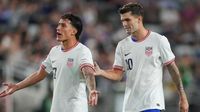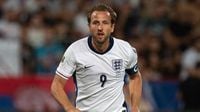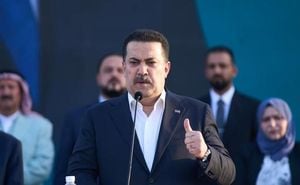With the 2026 FIFA World Cup just 231 days away, excitement is already reaching fever pitch across North America and beyond. In a testament to the tournament’s global appeal, more than 1 million tickets have been snapped up as of October 16, 2025, according to FIFA’s latest update. That’s right—fans from 212 countries and territories are gearing up to descend on stadiums across the United States, Canada, and Mexico, eager to witness history unfold from June 11 through July 19, 2026.
It’s no surprise that the highest demand for tickets is coming from the three host nations, but the top 10 also includes football powerhouses like England, Germany, Brazil, Spain, Colombia, Argentina, and France. FIFA President Gianni Infantino captured the mood in a recent release, stating, “As national teams across the globe compete for a place at the historic FIFA World Cup 26, I am thrilled so many football-loving fans also want to be part of this watershed event in North America. It’s an incredible response, and a wonderful sign that the biggest, most inclusive FIFA World Cup in history is capturing the imagination of supporters everywhere.”
Ticket sales for the event have been nothing short of a spectacle themselves. The initial buyers were selected from a staggering 4.5 million applicants in a lottery held last month, with the next entry period opening on October 27, 2025. Single-match tickets to all 104 games, along with venue- and team-specific packages, will soon be up for grabs. But if you’re thinking about waiting for a bargain, think again—on FIFA’s official resale site, tickets for the World Cup final at East Rutherford, New Jersey, were listed at eye-watering prices ranging from $9,538 to $57,500 as of October 16. Even more jaw-dropping: at least one ticket for the opening U.S. match in Inglewood, California, was posted for $61,642.
Dynamic pricing is making its World Cup debut, so ticket costs will fluctuate as demand ebbs and flows. The lowest-priced seats, set at $60, are available for at least 40 matches, but the vast majority of games will command much higher rates. For the opening U.S. match, initial sale prices ranged from $560 to $2,735—a steep climb for fans but a testament to the event’s drawing power. With approximately 7.1 million seats to fill across 104 matches in 16 North American venues, the race for tickets is just getting started. And with a second phase of sales for lottery winners set for mid-November to early December, followed by a random selection draw after the final team draw on December 5, there are still plenty of opportunities for hopeful supporters.
FIFA has also opened its resale portal, allowing fans who missed out in the first round to try their luck—if they’re willing to pay the premium. The organization hasn’t released a full grid of ticket prices, a departure from previous tournaments, adding a layer of suspense (and perhaps frustration) for those trying to budget for the world’s biggest sporting event.
As the tournament approaches, the U.S. men’s national team (USMNT) is under the microscope. Coach Mauricio Pochettino faces a series of tough roster decisions, with only three international windows left to fine-tune his squad before the big kickoff. The expanded 26-man roster gives him a bit more flexibility, but the pressure is on to get every selection right—especially with key positions like starting No. 9, right back, and potentially the No. 1 goalkeeper role still up for grabs.
The projected USMNT roster, as of October 2025, features a mix of established stars and emerging talents. In goal, Matt Freese has emerged as Pochettino’s preferred starter, with Matt Turner and Patrick Schulte providing solid backup. Freese’s performances in the CONCACAF Gold Cup and recent international windows have solidified his claim, though Turner and Schulte remain viable options thanks to their consistent play in MLS.
Defensively, Chris Richards has become the linchpin at center back, thanks to his strong showings at Crystal Palace over the past season and a half. Veteran Tim Ream’s composure and leadership keep him in the mix, while Miles Robinson, Mark McKenzie, and Cameron Carter-Vickers are all battling for starting roles—especially if Pochettino opts for a three-center-back formation. Antonee Robinson is the clear first-choice left back, though Max Arfsten has impressed in recent camps and could push for more minutes. Sergiño Dest’s versatility makes him the favorite at right back, but his health remains a question mark. Alex Freeman’s recent rise has put him ahead of Joe Scally for now, while other defenders like John Tolkin and Kristoffer Lund remain on the fringes.
The midfield is anchored by Tyler Adams, whose tireless work rate and leadership are invaluable. Weston McKennie’s adaptability allows him to play multiple roles, either centrally or out wide, and Yunus Musah’s loan move to Atalanta should provide him with the regular minutes needed to stake his claim. Malik Tillman, Tanner Tessmann, Brenden Aaronson, and Diego Luna round out a group that blends creativity, experience, and youthful energy. Tessmann’s emergence at Lyon and Tillman’s move to Bayer Leverkusen have only boosted their stock, while Aaronson’s relentless running and Luna’s physicality offer valuable options off the bench.
Up front, Christian Pulisic is the undisputed star, having started the season on fire with AC Milan. His fitness, however, is always a concern, especially after a grueling Serie A campaign. Tim Weah and Alex Zendejas provide width and versatility, while the battle for the coveted No. 9 spot is heating up. Folarin Balogun and Haji Wright both found the net in the October window, making them frontrunners, though Ricardo Pepi, Patrick Agyemang, and Josh Sargent are all in contention. Agyemang’s physicality and ability to win duels make him a unique asset, while Pepi’s role hinges on his fitness. Sargent, despite a recent scoring drought, could still force his way in with a strong club run.
Notably, the expanded roster allows Pochettino to consider more options than ever before, but it also means some tough calls are inevitable. Players like Gio Reyna, Aidan Morris, and Johnny Cardoso are on the bubble, needing strong club performances and good health to break into the final squad. The next few months will be crucial as domestic and international form comes into sharper focus.
Off the field, the World Cup’s cultural impact is already being felt. Los Angeles Lakers guard Luka Doncic, a passionate Real Madrid fan, was announced as an ambassador for the World Cup matches in Southern California. Doncic, who speaks four languages and hails from Slovenia, expressed his excitement: “I’ve always been a football fan. Los Angeles is a great city full of amazing people who love to play and watch every sport. I can’t wait for the World Cup and it’s an honor to help bring people together through a sport that connects so many cultures around the globe.”
As anticipation builds, fans are left juggling ticket lotteries, resale prices, and roster speculation. But one thing’s for certain: the 2026 FIFA World Cup in North America is shaping up to be a truly global celebration, with millions vying for a seat at the table and national teams, like the USMNT, working feverishly to seize their moment on the world’s grandest stage.






